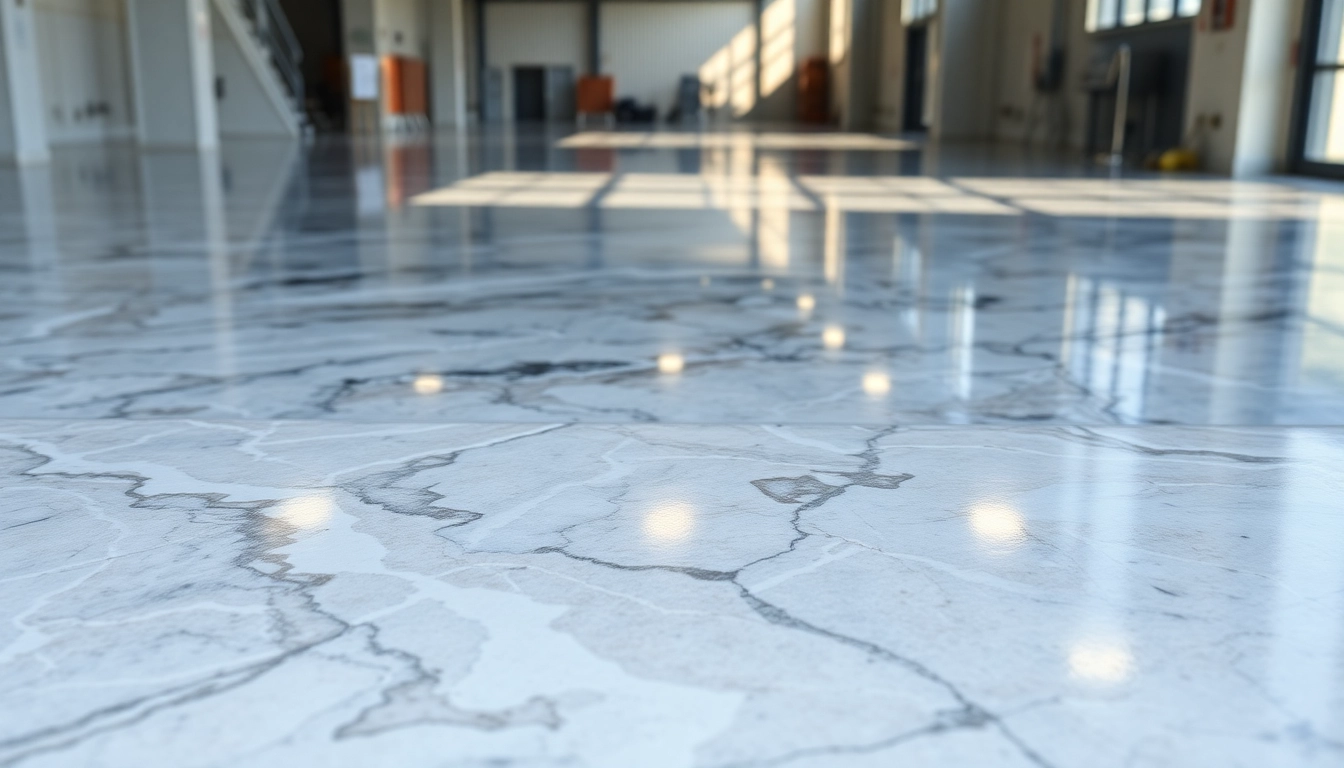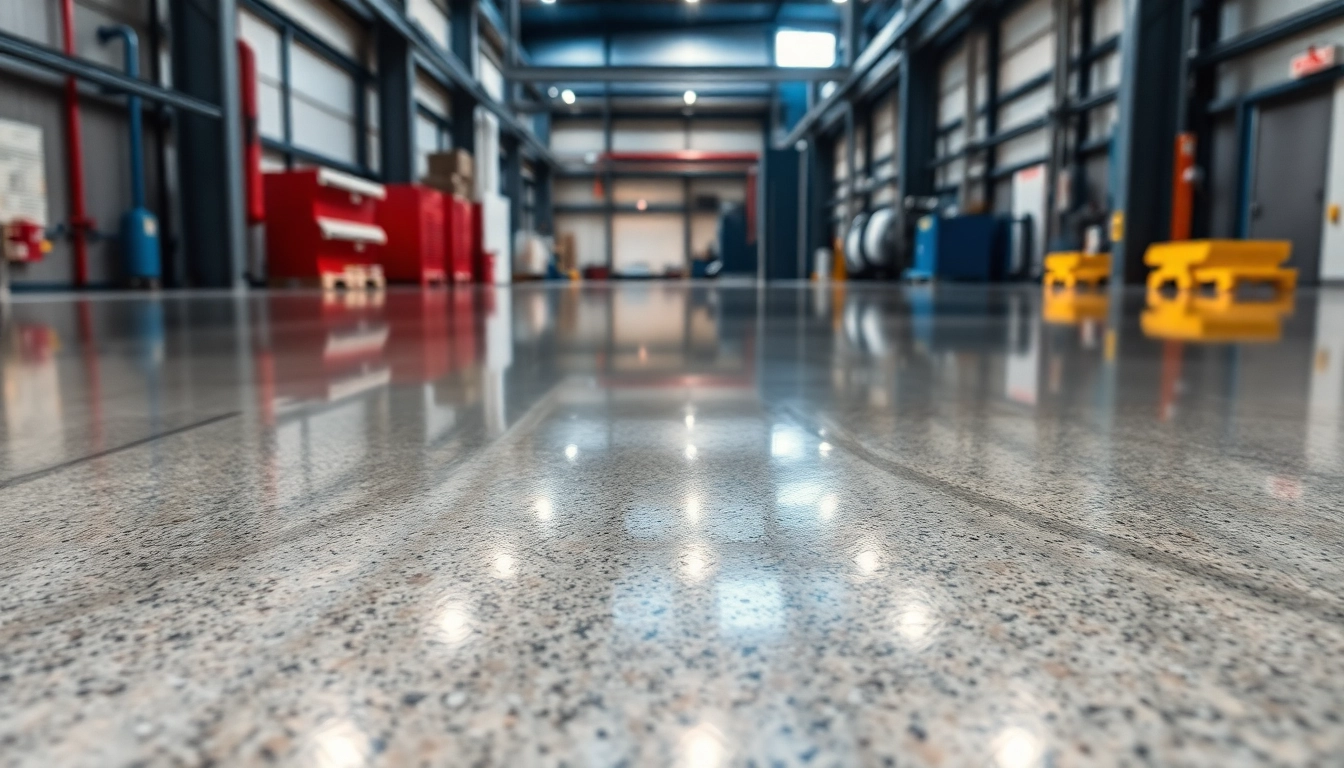Enhance Your Space with Expert-Recommended Epoxy Resin Floor Solutions
Understanding the Basics of Epoxy Resin Floors
Epoxy resin flooring has become a popular choice for both residential and commercial spaces due to its exceptional durability, aesthetic versatility, and ease of maintenance. As an advanced surface treatment, epoxy floors create a seamless, high-performance surface that resists wear, chemicals, and moisture—a crucial factor for environments prone to heavy foot traffic or spills. If you’re considering upgrading your flooring, understanding the fundamental aspects of epoxy resin floors will help you make informed decisions and select the best solution for your needs.
To start exploring this innovative flooring option, visit Epoxy resin floor and discover the expert services available for installation, consultation, and ongoing maintenance. This resource provides valuable insights into professional epoxy flooring solutions tailored to various facility requirements.
What Is an Epoxy Resin Floor?
An epoxy resin floor is a specialized surface coating system composed mainly of epoxy resins—a type of polymer that chemically bonds with concrete or other substrates. The process involves applying a layer—or multiple layers—of epoxy resin to create a hard, resilient coating. When cured, it forms a robust surface that exemplifies both functionality and design flexibility.
This flooring system is renowned for its high strength, chemical resistance, and seamless finish, making it ideal for sectors such as manufacturing, warehousing, healthcare, retail, and even decorative residential spaces. Modern epoxy formulations are available in various finishes, including matte, gloss, metallic, and decorative flakes, allowing customization to match aesthetic and functional preferences.
Key Benefits of Epoxy Resin Flooring
- Durability: Epoxy floors are exceptionally resistant to abrasion, impacts, and wear, ensuring longevity even under heavy loads.
- Chemical Resistance: The surfaces effectively withstand exposure to acids, oils, solvents, and other corrosive substances, minimizing maintenance needs.
- Ease of Maintenance: Sealed and smooth, epoxy floors are straightforward to clean with sweeping and mopping, reducing cleaning time and costs.
- Aesthetic Versatility: Available in numerous colors and finishes, epoxy floors can mimic natural stone, metallic effects, or incorporate decorative elements like flakes and graphics.
- Seamless Surface: Creates a uniform, joint-free surface that prevents dirt and bacteria accumulation, essential for hygienic environments.
- Cost-Effectiveness: While initial investment might be higher than traditional coatings, the longevity and minimal maintenance requirements offer excellent value over time.
Common Applications and Venues
Epoxy resin floors are versatile and suited for numerous environments, including:
- Industrial Facilities: Factories and warehouses benefit from their resistance to heavy machinery, chemical spills, and high foot traffic.
- Commercial Spaces: Retail outlets, showrooms, and supermarkets utilize epoxy for both durability and brand-enhancing aesthetics.
- Healthcare Settings: Hospitals, laboratories, and clinics require hygienic, seamless surfaces that support strict cleaning protocols.
- Educational Institutions: Schools and universities use epoxy flooring to create safe, spotless, and resilient floors.
- Residential Garages and Basements: Homeowners seek epoxy for its attractive finish and resistance to stains and impacts.
Choosing the Right Epoxy Resin Floor for Your Needs
Types of Epoxy Coatings
Understanding the different epoxy formulations is crucial to selecting the best product for your project. Common types include:
- 3-Component Epoxy Systems: Typically consist of resin, hardener, and a catalyst, offering high strength and chemical resistance, suitable for industrial applications.
- Self-Leveling Epoxy: Designed for smooth, even surfaces with a glossy finish, ideal for decorative purposes and residential floors.
- Anti-slip Epoxy: Contains textured additives like silica or aluminum oxide to improve safety without compromising aesthetics.
- UV-Resistant Epoxy: Formulated to resist yellowing or degradation under sunlight, perfect for outdoor or sunlit spaces.
Factors to Consider: Durability, Aesthetics, Budget
Choosing the right epoxy system involves balancing multiple factors:
- Durability: For high-traffic or industrial environments, opt for high-solids, chemical-resistant formulations.
- Aesthetics: For decorative interiors, metallic or flake finishes provide sophistication and customization.
- Budget: While premium epoxy systems may require a higher upfront investment, their long-term benefits often justify the cost.
- Application Environment: Consider interior vs. exterior placement, exposure to UV, and temperature variations.
Environmental and Safety Considerations
Eco-friendly options are increasingly available, including low-VOC and solvent-free formulations that reduce environmental impact and improve indoor air quality. Safety during application involves proper PPE, ventilation, and adherence to manufacturer guidelines to minimize inhalation risks and skin contact.
Step-by-Step Installation Guide
Preparation and Surface Cleaning
Begin with thorough surface preparation. This involves cleaning to remove dust, grease, and existing coatings, followed by repairs to concrete imperfections. Proper surface profiling—using grinding or shot blasting—is necessary to ensure optimal adhesion of the epoxy coating.
Maintaining dryness and a stable temperature during application is essential to prevent issues like bubbling or inadequate curing.
Mixing and Applying the Epoxy
Mix epoxy components precisely according to manufacturer instructions. For example, a typical two-component epoxy requires mixing resin and hardener in the specified ratio. Use clean tools and containers to prevent contamination.
Application techniques vary: pour self-leveling products and spread evenly with a roller or squeegee; apply decorative layers with brushes or sprayers. Multiple coats may be necessary, with proper curing times in between.
Finishing Touches and Maintenance Tips
After curing, apply sealants or slip-resistant additives if needed. Regular cleaning with gentle detergents and avoiding harsh chemicals will prolong the floor’s lifespan and maintain its appearance.
Maximizing Durability and Aesthetic Appeal
Protective Coatings and Sealants
Additional layers like polyaspartic or polyurethane sealants can enhance UV stability, scratch resistance, and gloss retention. These coatings also facilitate easier cleaning and further safeguard the epoxy surface.
Regular Cleaning and Maintenance Schedule
Implement routine cleaning protocols—sweeping daily and mopping weekly—to prevent dirt accumulation. Address spills promptly to avoid staining or chemical damage. Periodic inspections allow for timely repairs, restoring the floor’s integrity and appearance.
Troubleshooting Common Issues
Common problems include bubbling, peeling, or surface chatter. Solutions often involve proper surface preparation, ensuring correct mixing ratios, and controlling environmental conditions during application. Engaging professional installers can mitigate these risks and ensure optimal results.
Innovations and Future Trends in Epoxy Flooring
UV-Resistant and Eco-Friendly Options
Advancements include eco-friendly formulations with low VOCs and high UV stability, addressing environmental concerns while maintaining performance. These options expand the use of epoxy floors outdoors and in sun-exposed interiors.
Integrating Decorative Elements
Innovative techniques now allow embedding of metallic pigments, 3D effects, and decorative chips, transforming epoxy floors into design statements that combine beauty with function.
Advancements in Application Technologies
Automation and improved tools—for example, roller systems with precise temperature control—enhance application consistency and reduce installation time, making professional-grade results accessible to more users.



